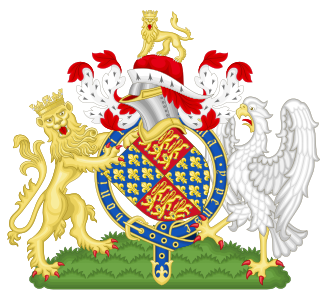Labour laws, labour code or employment laws are those that mediate the relationship between workers, employing entities, trade unions, and the government. Collective labour law relates to the tripartite relationship between employee, employer, and union.

A tailor is a person who makes or alters clothing, particularly in men's clothing. The Oxford English Dictionary dates the term to the thirteenth century.

The Statute of Labourers was a law created by the English Parliament under King Edward III in 1351 in response to a labour shortage, which aimed at regulating the labour force by prohibiting requesting or offering a wage higher than pre-Plague standards and limiting movement in search of better conditions. The popular narrative about its success and enforcement holds that it was poorly enforced and did not stop the rise in real wages. However, immediately after the Black Death, real wages did not rise, despite the labour shortage.

The emancipation of the British West Indies refers to the abolition of slavery in Britain's colonies in the West Indies during the 1830s. The British government passed the Slavery Abolition Act in 1833, which emancipated all slaves in the British West Indies. After emancipation, a system of apprenticeship was established, where emancipated slaves were required by the various colonial assemblies to continue working for their former masters for a period of four to six years in exchange for provisions. The system of apprenticeship was abolished by the various colonial assemblies in 1838, after pressure from the British public, completing the process of emancipation. These were the steps taken by British West Indian planters to solve the labour problems created by the emancipation of the enslaved Africans in 1838.

The Ordinance of Labourers 1349 is often considered to be the start of English labour law. Specifically, it fixed wages and imposed price controls; required all those under the age of 60 to work; prohibited the enticing away of another's servants; and other terms.
Because a great part of the people, and especially of workmen and servants late died of the pestilence, many seeing the necessity of masters, and great scarcity of servants, will not serve unless they may receive excessive wages, and some rather willing to beg in idleness, than by labour to get their living; we, considering the grievous incommodities, which of the lack especially of ploughmen and such labourers may hereafter come, have upon deliberation and treaty with the prelates and the nobles, and learned men assisting us, of their counsel ordained:
Truck Acts is the name given to legislation that outlaws truck systems, which are also known as "company store" systems, commonly leading to debt bondage. In England and Wales such laws date back to the 15th century.

In English and British history, poor relief refers to government and ecclesiastical action to relieve poverty. Over the centuries, various authorities have needed to decide whose poverty deserves relief and also who should bear the cost of helping the poor. Alongside ever-changing attitudes towards poverty, many methods have been attempted to answer these questions. Since the early 16th century legislation on poverty enacted by the Parliament of England, poor relief has developed from being little more than a systematic means of punishment into a complex system of government-funded support and protection, especially following the creation in the 1940s of the welfare state.

The Industrial Disputes Act, 1947 extended to the whole of India and regulated Indian labour law so far as that concerns trade unions as well as Individual workman employed in any Industry within the territory of Indian mainland. Enacted on 11 March 1947 and It came into force 1 April 1947. It was replaced by the Industrial Relations Code, 2020.
The history of minimum wage is about the attempts and measures governments have made to introduce a standard amount of periodic pay below which employers could not compensate their workers.
The Court of Arbitration was the first court in New South Wales, a state of Australia which dealt exclusively with industrial relation disputes in the early twentieth century. Justice Lance Wright claims that it perhaps was the first court of its type in the world. The court was unique at that time as it was the first court of its type to deal with labour relations between employer and employees on a compulsory basis. Previous arbitration measures between employer and employee had been on a voluntary basis or had been based on the criminal justice system through the use of criminal penalties. The conventional economic model is that both employer and employee enjoy equal bargaining power to set wages and conditions. This asserts that both parties are able to agree on a fair market price for the cost of labour free from distortions. However, where employers or employees group together, these outcomes can be distorted particularly in “boom” or “bust” economic conditions. The purpose of the court was to change the manner in which employers and employees negotiated pay and conditions. It was an attempt to reduce the power imbalances between employer groups or employee unions that arose from using collective bargaining, and the resulting use of that market power to influence wages, and also to reduce the threat of lockout or strikes to achieve those ends.
Labour in India refers to employment in the economy of India. In 2020, there were around 476.67 million workers in India, the second largest after China. Out of which, agriculture industry consist of 41.19%, industry sector consist of 26.18% and service sector consist 32.33% of total labour force. Of these over 94 percent work in unincorporated, unorganised enterprises ranging from pushcart vendors to home-based diamond and gem polishing operations. The organised sector includes workers employed by the government, state-owned enterprises and private sector enterprises. In 2008, the organised sector employed 27.5 million workers, of which 17.3 million worked for government or government owned entities.
The History of labour law in the United Kingdom concerns the development of UK labour law, from its roots in Roman and medieval times in the British Isles up to the present. Before the Industrial Revolution and the introduction of mechanised manufacture, regulation of workplace relations was based on status, rather than contract or mediation through a system of trade unions. Serfdom was the prevailing status of the mass of people, except where artisans in towns could gain a measure of self-regulation through guilds. In 1740 save for the fly-shuttle the loom was as it had been since weaving had begun. The law of the land was, under the Act of Apprentices 1563, that wages in each district should be assessed by Justices of the Peace. From the middle of the 19th century, through Acts such as the Master and Servant Act 1867 and the Employers and Workmen Act 1875, there became growing recognition that greater protection was needed to promote the health and safety of workers, as well as preventing unfair practices in wage contracts.

The history of labour law concerns the development of labour law as a way of regulating and improving the life of people at work. In the civilisations of antiquity, the use of slave labour was widespread. Some of the maladies associated with unregulated labour were identified by Pliny as "diseases of slaves."

The cultural and legal framework within which tradesmen contracted for work, and hired men was similar to that of Great Britain. These immigrants quickly sought to establish and regulate the basic institutions of the trades: Friendly societies, the house of call and apprenticeship. Friendly societies were worker controlled mutual insurance organizations. They provided an income in the case of strike, injury or economic downturn. Their association with specific trades also made them useful vehicles for trade union organization.
The Inter-State Migrant Workmen Act, 1979 was an Act of the Parliament of India enacted to regulate the condition of service of inter-state labourers in Indian labour law. The Act's purpose was to protect workers whose services are requisitioned outside their native states in India. Whenever an employer faces shortage of skills among the locally available workers, the act created provision to employ better skilled workers available outside the state. The act was replaced by the Occupational Safety, Health and Working Conditions Code, 2020

The Health and Morals of Apprentices Act 1802, sometimes known as the Factory Act 1802, was an Act of the Parliament of the United Kingdom designed to improve conditions for apprentices working in cotton mills. The Act was introduced by Sir Robert Peel, who had become concerned in the issue after a 1784 outbreak of a "malignant fever" at one of his cotton mills, which he later blamed on 'gross mismanagement' by his subordinates.

Hiring fairs, also called statute or mop fairs, were regular events in pre-modern Great Britain and Ireland where labourers were hired for fixed terms. They date from the time of Edward III, and his attempt to regulate the labour market by the Statute of Labourers in 1351 at a time of a serious national shortage of labour after the Black Death. Subsequent legislation, in particular the Statute of Apprentices of 1563, legislated for a particular day when the high constables of the shire would proclaim the stipulated rates of pay and conditions of employment for the following year. Because so many people gathered at a fair, it quickly turned into the major place for matching workers and employers. Hiring fairs continued well into the 20th century, up to the Second World War in some places but their function as employment exchanges was diminished by the Corn Production Act 1917. This legislation guaranteed minimum prices for wheat and oats, specified a minimum wage for agricultural workers and established the Agricultural Wages Board, to ensure stability for farmers and a share of this stability for agricultural workers.
The labour movement is the collective organisation of working people to further their shared political and economic interests. It consists of the trade union or labour union movement, as well as political parties of labour. It can be considered an instance of class conflict.

The 2nd Parliament of Queen Elizabeth I was summoned by Queen Elizabeth I of England on 10 November 1562 and assembled on 11 January 1563. The stated intentions of summoning the Parliament were similar to that of Elizabeth's first parliament i.e. to resolve the religious issue and to approve funds for the defence of the realm. Thomas Williams, sitting for Exeter, was elected Speaker of the House of Commons.
Apprenticeships have a long tradition in the United Kingdom, dating back to around the 12th century. They flourished in the 14th century and were expanded during the industrial revolution. In modern times, apprenticeships were formalised in 1964 by act of parliament and they continue to be in widespread use to this day.










